|
Special Feature*
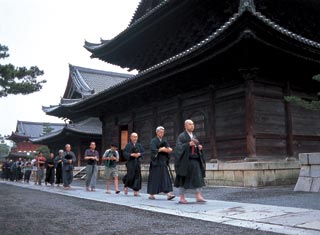 |
 |
Walking single file to the morning meditation session. The monk at the front keeps ringing a small inkin bell.
|
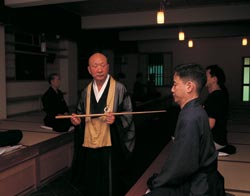 |
Dongeshitsu,the venerable teacher pictured here, watches everyone carefully to make sure they all have the correct posture while meditating in the Zen hall.
|
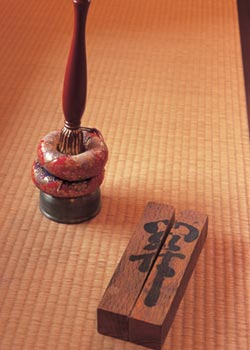 |
Inkin bell (left) and taku wooden clappers. These two sounding objects give almost all of the signals indicating steps to follow in the Zen meditation hall and the dining room, where silence is the rule.
|
This night an elder priest pays a surprise visit to the meditation hall. He exhorts us to do our utmost to be aware of our true selves each and every moment. At 10 p.m., it is lights out. My space is one tatami mat. I fold myself into a futon.
Apart from the snoring, the night is pleasant. But the temple morning comes early. My eyes snap open at 5 a.m. with the sharp chime of a bell rung three times. Fifteen minutes later, we all shuffle toward the large meditation hall. Like a rainbow of cloth enveloping the center of the hall, a variety of colored curtains descend from the ceiling. An immense portrait of a dragon stares down at us. In the morning silence, we meditate.
Life at the temple is simple. The monks move fluidly, without wasted motion or needless sound. At breakfast after meditation we are told to take the meal with gratitude, waste no food and make no unnecessary sound. When we are through, we are told to polish the bowls with tea and a pickle. Then, it is back to the meditation hall for cleaning. My poor manners and cleaning skills provide much food for thought. It is only 8 a.m., and we are done.
We weekend Zen practitioners gather to reflect on our experience. Here I learn that people come to Zen for a variety of reasons—some to reexamine themselves, some to overcome loss. One person, a boy, said he was tricked by his father into coming here! Monk Ishida says: "When meditating, there is part of you that hurts and wants to quit. But there is another part of you that wants to stick it out. When these two become one, you are truly yourself. It may be very difficult, but this is how you approach the world of enlightenment."
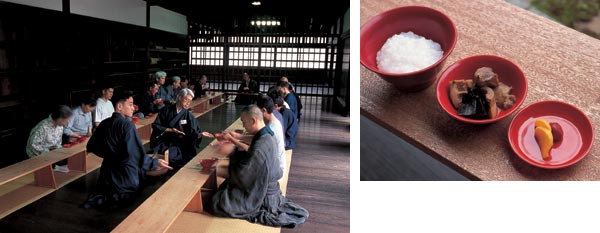 |
Left: In a Zen temple, breakfast is called shukuza. Time seems to stand still during the quiet meal.
Right: Breakfast, from left: rice gruel (o-kayu); boiled and seasoned bamboo shoots with kombu seaweed; pickled Japanese apricot (ume) and daikon radish.
|
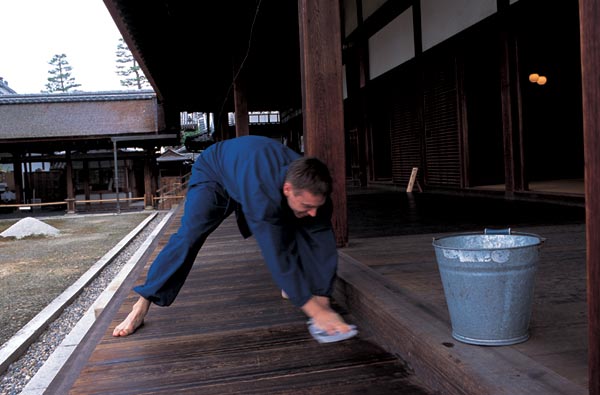 |
Wiping dust off the veranda at Myoshin-ji Temple is a part of Zen training.
|
|